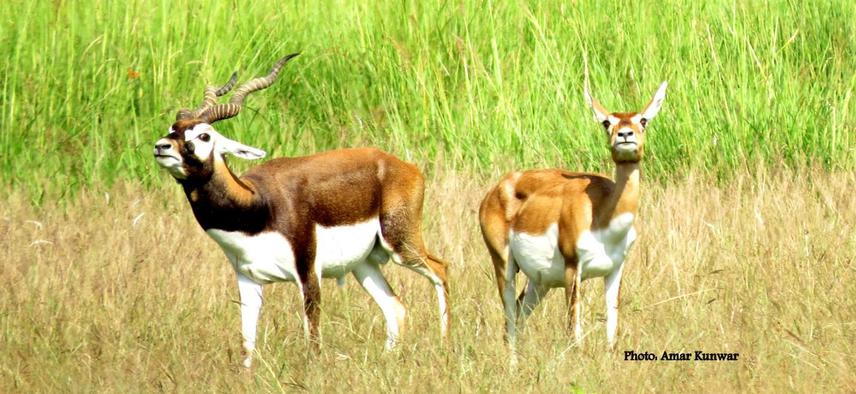Amar Kunwar
Other projects
2 Jan 2018
Seeking Human-Blackbuck Coexistence: Ensuring Long-Term Viability of the Blackbuck Population in Nepal
Habitat suitability Assessment, Blackbuck-human conflict evaluation and local community participation for conservation of Blackbuck in Blackbuck Conservation Area, Bardia, Nepal.

Understanding and predicting wildlife-habitat relationships and identifying and protecting suitable ecological areas and landscapes to ensure the viability of wild populations is a foundation of wildlife management. The recent population scenario of blackbuck in BCA shows increasing trend which is restricted within a small area of core habitat. This indicates that the present habitat will no longer hold future population within the restricted area. The threat of extinction increases as it is the only surviving population in Nepal and can easily collapse due to habitat encroachment and fragmentation, disease epidemics and inbreeding. In this condition, it encourages for immediate habitat assessment and habitat prediction for viable population maintenance. Furthermore, the area is heavily encroached by indigenous human settlements, agricultural lands and community forests. The small habitat is also fragmented by the busy cart road and other small foot trails. Anthropogenic disturbances and livestock grazing are the other external forces that confine its distribution to small area and increase blackbuck-human conflicts. People-wildlife conflict is one of the major threats to the survival of many wildlife species. If solutions to conflicts are not adequate, local support for conservation declines. Hence, along with ecological study, community-based approaches are crucial for conservation of this vulnerable animal as well as create positive impression among local people towards its conservation.
Hence, this project focuses on habitat suitability assessment to find out bio-geographical factors and human-disturbance factors that affect selection of blackbuck habitats, blackbuck-human conflicts evaluation and local community participation for conservation of blackbuck in Blackbuck Conservation Area (BCA), Bardia, Nepal.
As Tarai-Duar Savannah-land is the prime habitat for the species, the whole of the Eco- region within the national boundary will be modelled based on the ecological factors obtained from known presence data of the species to predict other suitable for translocations which have high conservation implications of a localized population. Distribution of major conflicting zones, types of conflicts, intensity, causes and effects of conflicts will be determined through questionnaire survey with Conservation Area Officials and local people and through direct field surveys. Conservation Area Officials, Community leaders, Senior citizens, Teachers, NGO/INGO members, media and youths will be mobilized to build Public Support and conduct various Conservation Awareness Programs.